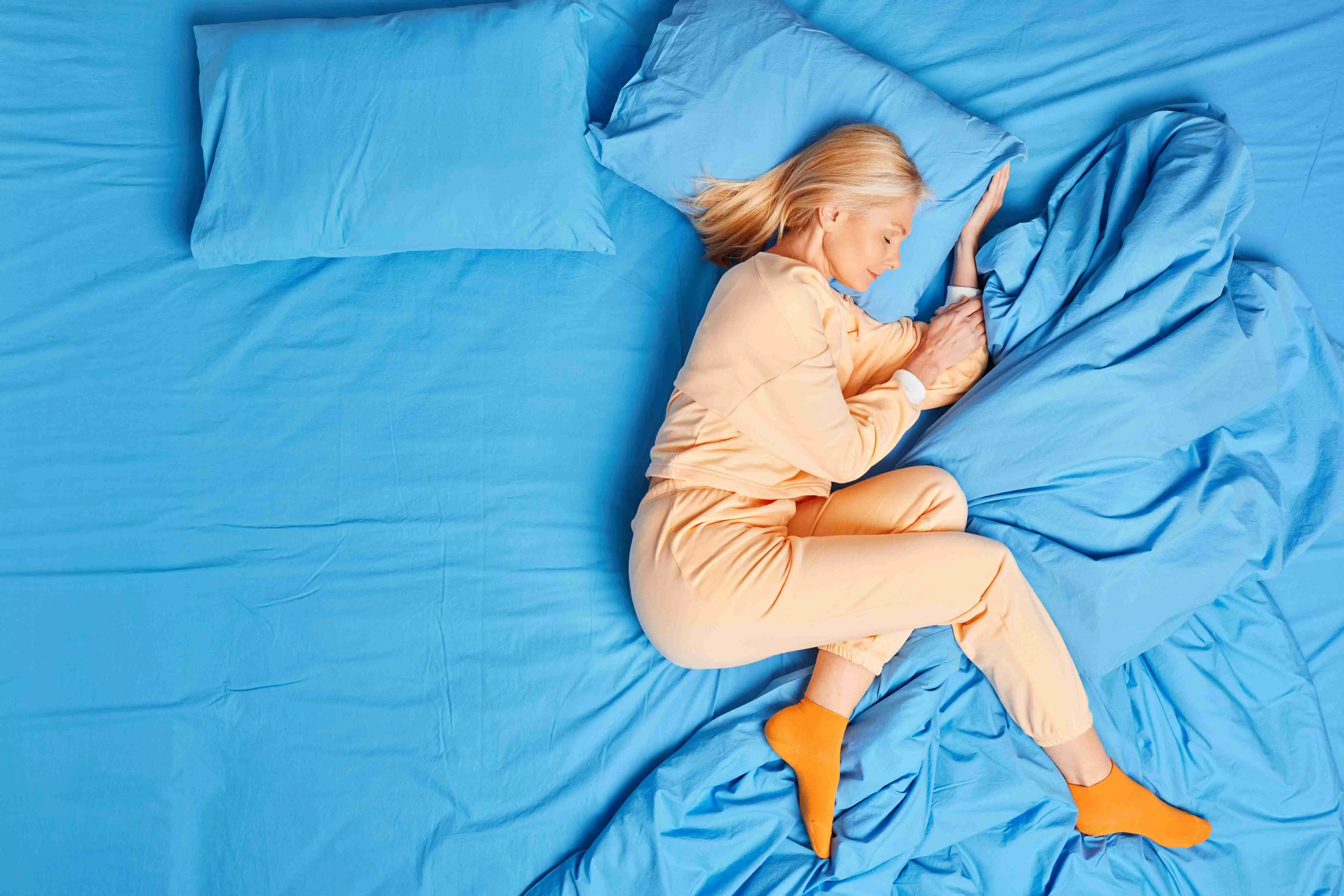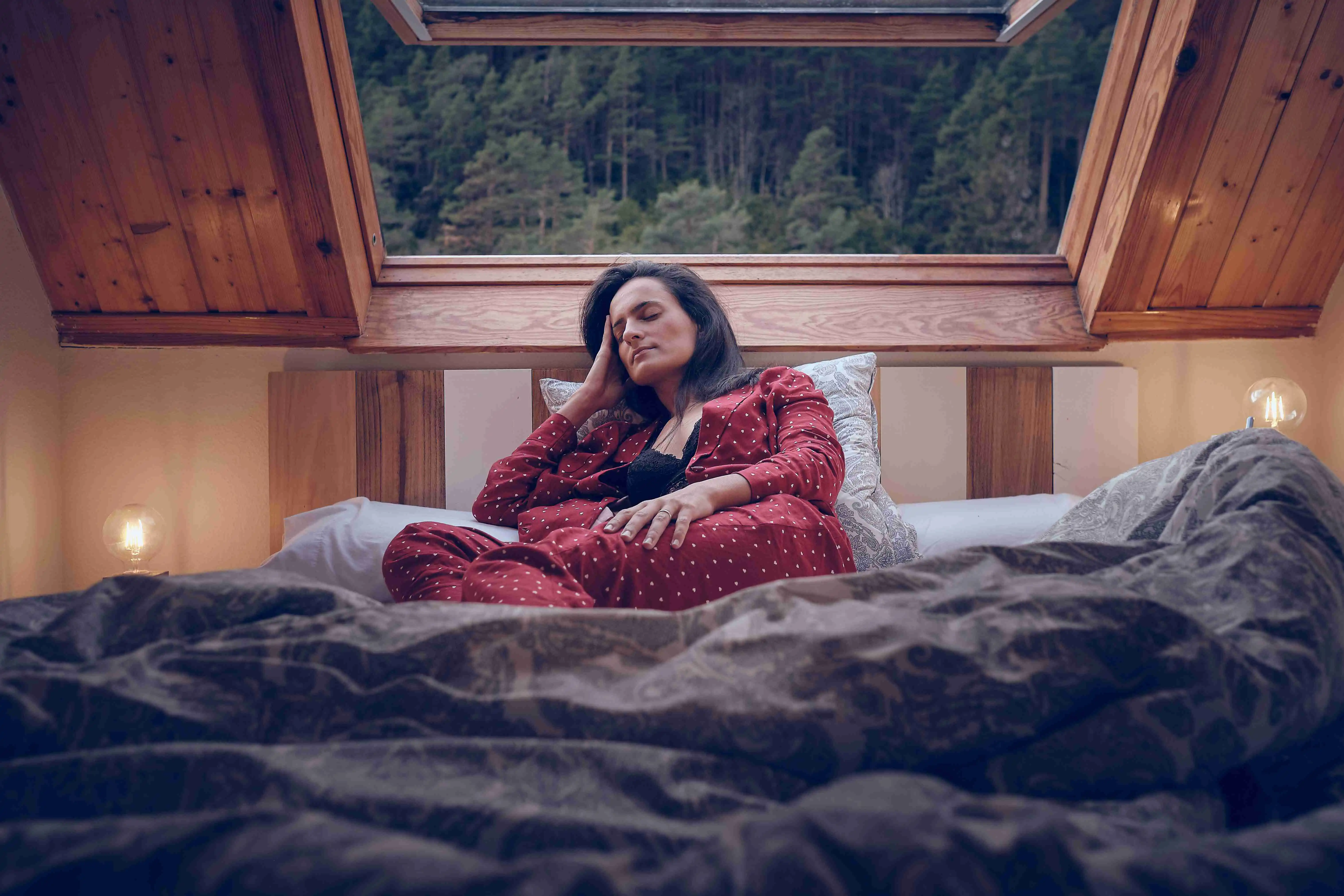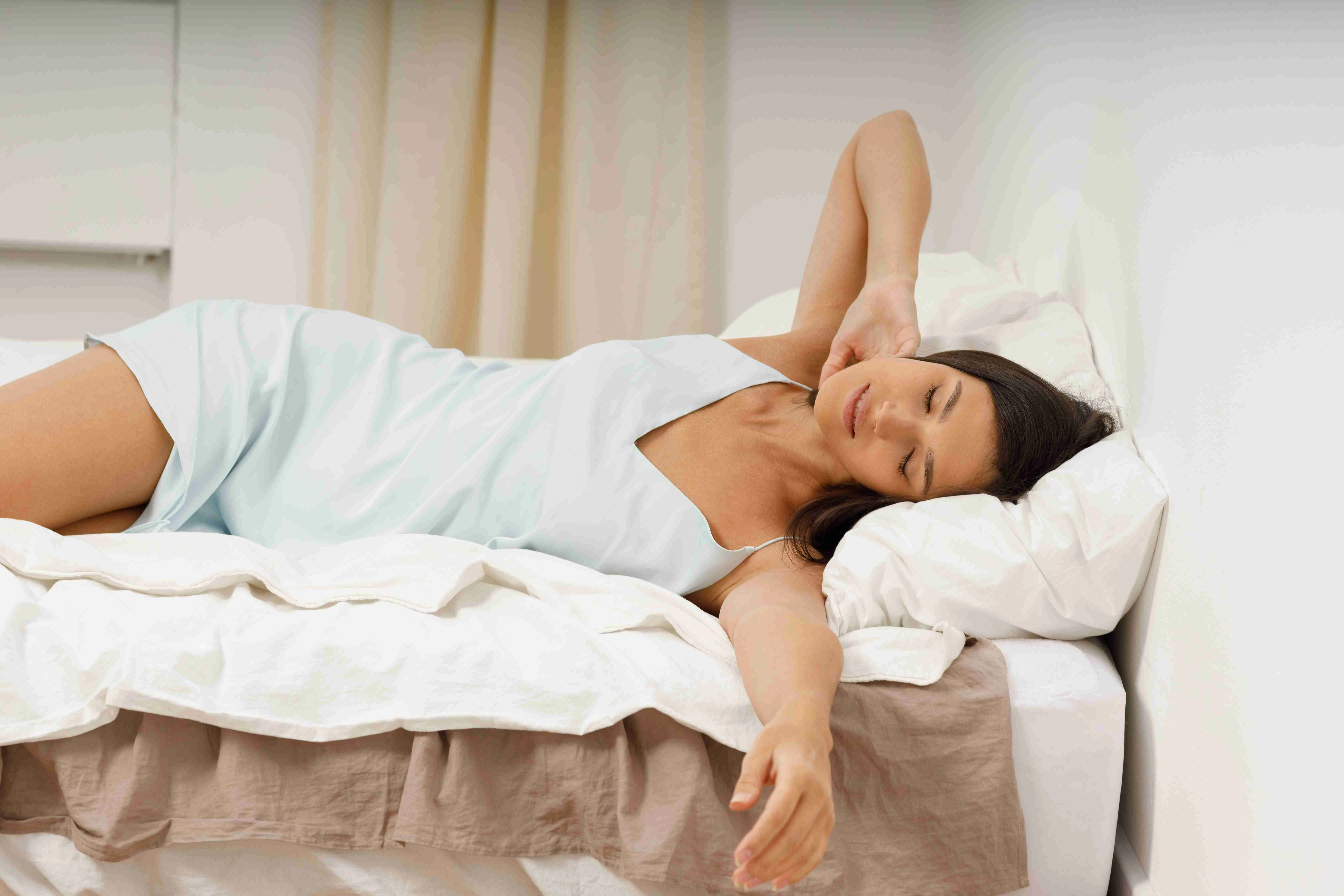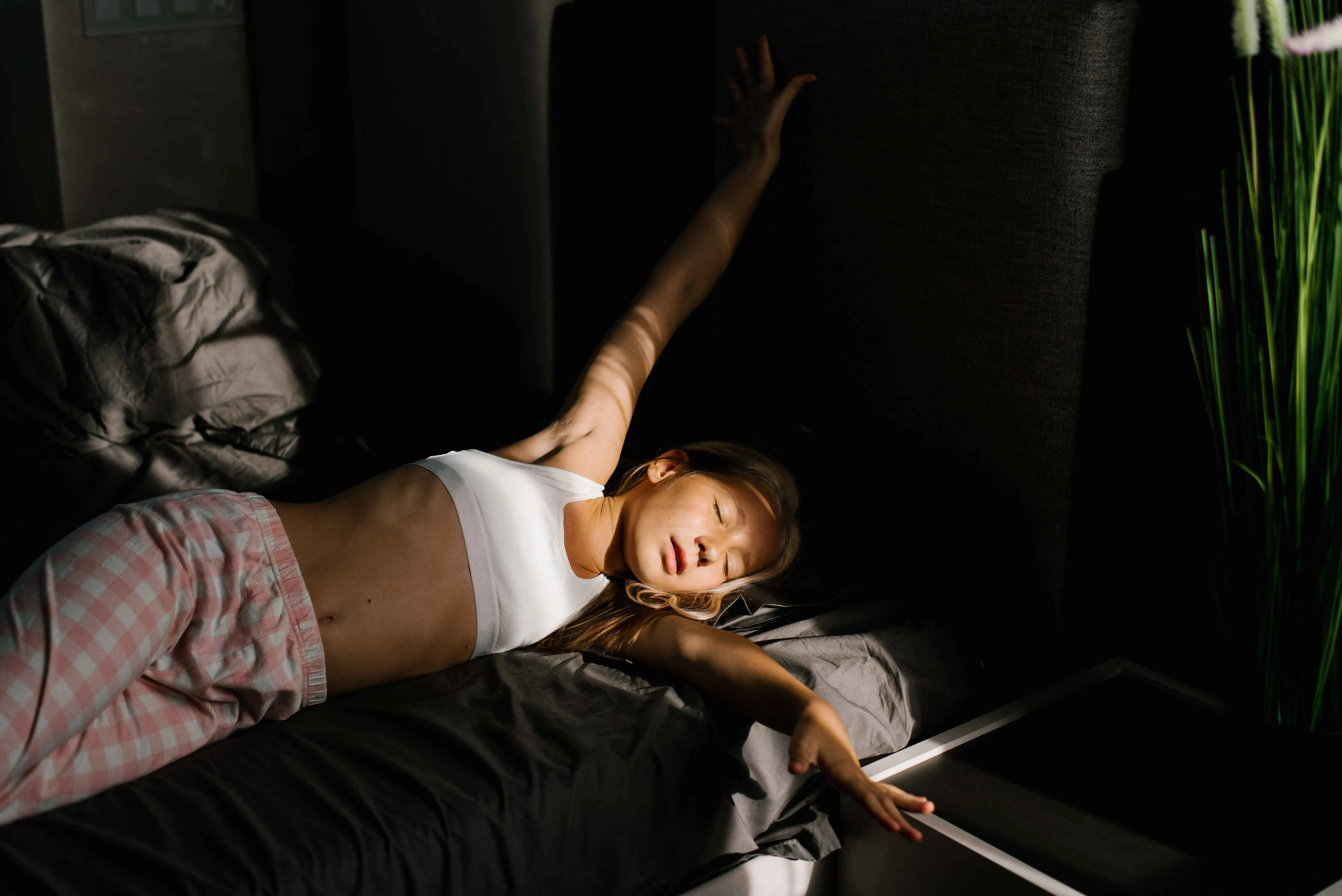Sleep-related movement disorders can significantly impact an individual's quality of life. They can disrupt sleep patterns, cause daytime fatigue, and even lead to other health problems.
Identifying the symptoms, causes, and potential treatments of these disorders is critical to enhancing and improving the overall quality of life for the people who suffer from them.
What are Sleep-Related Movement Disorders

Sleep-related movement disorders refer to a group of conditions characterized by abnormal movements or behaviors during sleep. These disorders can disrupt the quality and duration of sleep, leading to daytime fatigue and impaired functioning.
Causes and Risk Factors of Sleep-related Movement Disorders
Understanding the causes and risk factors associated with sleep-related movement disorders is essential for effective diagnosis and treatment, which will allow individuals affected by sleep-related movement disorders to attain better quality sleep and overall well-being.
Neurological Conditions
Neurological conditions such as Parkinson's disease, stroke, or brain tumors can increase the risk of developing sleep-related movement disorders.
These conditions disrupt the normal functioning of the brain and can lead to abnormal movements during sleep.
Medication
Some medications used to treat other conditions, such as antidepressants or antipsychotics, can cause side effects that manifest as abnormal movements during sleep.
Genetics
People with a family history of sleep-related movement disorders are more likely to develop the condition themselves. Identifying these genetic factors can assist in predicting who is at a higher risk, allowing for early interventions or preventive measures.
Age and Gender
Some of these disorders, such as restless leg syndrome, tend to affect older individuals more frequently. During pregnancy or menopause, hormonal changes in women can also increase the risk of developing these disorders.
Understanding these demographic factors can help healthcare professionals tailor their approach to diagnosis and treatment.
Types of Sleep-Related Movement Disorders
There are various types of sleep-related movement disorders that can significantly impact an individual's sleep quality and overall well-being. To improve sleep and overall health, it is important to recognize the symptoms of these disorders and seek appropriate diagnosis and treatment from healthcare professionals.
Restless Leg Syndrome (RLS)
An uncontrollable urge to move the legs and frequently unpleasant sensations are symptoms of restless legs syndrome (RLS), a neurological disorder.
These sensations typically occur at rest or during periods of inactivity, such as when sitting or lying down. RLS can cause significant sleep disturbances, leading to excessive daytime sleepiness and fatigue.
Periodic Limb Movement Disorder (PLMD)
Periodic limb movement disorder (PLMD) is defined as repetitive and involuntary limb movements during sleep. In PLMD, the movements usually involve the legs but can also affect the arms.
PLMD can disrupt sleep, resulting in fragmented and non-restorative sleep, daytime sleepiness, impaired functioning, and insomnia.
PLMD treatment can be relaxation exercises or medications depending on the severity of the case.
Rhythmic Movement Disorder (RMD)
Rapid eye movement sleep behavior disorder (RMD) is a condition in which individuals act out their dreams while asleep. This disorder is characterized by the loss of muscle atonia during REM sleep, leading to movements and behaviors that can be disruptive and potentially dangerous. RMD is commonly associated with neurodegenerative disorders such as Parkinson's disease.
Sleep Myoclonus
The term sleep myoclonus refers to sudden muscle contractions or jerks that occur during sleep. Brief awakenings may accompany these localized or multi-muscle group movements.
Sleep myoclonus is usually harmless, but it can disrupt sleep and lead to daytime sleepiness.
Bruxism
Bruxism is a sleep-related movement disorder characterized by teeth grinding or clenching during sleep. This condition can cause dental problems, jaw pain, and headaches, and disrupt both sleep quality and bed partners' sleep.
Less Common Sleep-Related Movement Disorders

Some sleep-related movement disorders are less common than others; disorders such as Benign Sleep Myoclonus of Infancy and Propriospinal Myoclonus at Sleep Onset are considered sleep-related disorders; however, they don’t affect as many people as restless leg syndrome or Periodic Limb Movement Disorder.
Benign Sleep Myoclonus of Infancy
Benign Sleep Myoclonus of Infancy is a less common sleep-related movement disorder that typically affects infants between the ages of 3 and 12 months.
This disorder is characterized by sudden, jerking movements of the limbs or body during sleep. Though frightening for parents, these movements are harmless and do not hurt the baby.
Propriospinal Myoclonus at Sleep Onset
This disorder is characterized by sudden, involuntary muscle contractions that occur at the onset of sleep. These myoclonic jerks can be disruptive to sleep and cause daytime fatigue.
Abnormal activity in the spinal cord, specifically in the proprioceptive pathways that control muscle movement, is believed to cause propriospinal myoclonus.
Although the exact cause of this disorder remains unknown, it is believed to stem from a dysfunction in the central nervous system.
Symptoms of Sleep-Related Movement Disorders
Sleep-related movement disorders can manifest in various symptoms, such as involuntary movement during sleep or leg movement during sleep; this can significantly impact an individual's quality of life. If you suspect that you or someone you know may be experiencing symptoms of a sleep-related movement disorder, it is important to consult with a healthcare professional for proper evaluation and diagnosis.
Frequent Awakenings
One common symptom of sleep-related movement disorders is frequent awakenings throughout the night. Sleeping with repetitive movements like kicking, rocking, or talking can cause this.
These movements can cause the person to wake up multiple times during the night, leading to fragmented sleep and a feeling of not being well-rested in the morning.
Shorter Deep Sleep Duration
Deep sleep is an important stage of sleep that allows for physical and mental restoration. However, individuals with these disorders may experience disruptions in their deep sleep, leading to a reduced amount of time spent in this restorative stage.
Excessive Daytime Sleepiness
Excessive daytime sleepiness occurs when people feel exhausted and drowsy despite getting enough sleep. This excessive sleepiness can lead to difficulties in staying awake during work or daily activities, affecting their productivity and overall functioning.
Physical Discomfort
Individuals may experience uncomfortable sensations in their limbs, such as tingling, itching, or aching, which can disrupt their ability to fall asleep or maintain a restful sleep.
These sensations are often most pronounced during periods of inactivity, such as when lying in bed or sitting for prolonged periods.
Poor Sleep Quality
Individuals with sleep-related movement disorders often experience difficulty falling asleep and staying asleep throughout the night.
They may frequently wake up during the night due to involuntary movements or sensations in their limbs. This can lead to fragmented sleep and a feeling of unrest upon waking.
Treatments for Sleep-Related Movement Disorders

Sleep-related movement disorders can significantly impact a person's quality of sleep and overall well-being. Fortunately, there are various treatment options available to manage these disorders and improve sleep outcomes.
Medications
The use of medications is one common approach to treating sleep-related movement disorders, as they can help reduce symptoms like restless legs syndrome or periodic limb movement disorder.
These medications work by either calming the nervous system or regulating dopamine levels in the brain.
Cognitive-Behavioral Therapy for Insomnia
CBT-I focuses on improving sleep hygiene by identifying and addressing negative thoughts or behaviors that contribute to sleep difficulties.
This therapy can help individuals develop relaxation techniques, establish regular sleep schedules, and promote healthy sleep habits.
Surgery
For sleep-related movement disorders that do not respond to other treatments, doctors may recommend surgery in some cases. Surgical interventions can include deep brain stimulation or nerve decompression to alleviate symptoms.
However, a medical specialist should carefully evaluate the decision to undergo surgery after other conservative measures have failed.
Devices and Tools
Devices and tools have proven to be effective in alleviating symptoms and improving sleep quality. One such device is a continuous positive airway pressure (CPAP) machine, commonly used to treat sleep apnea.
It helps keep the airway open during sleep, reducing the occurrence of movements associated with sleep-related movement disorders.
Another useful tool is a weighted blanket, which provides deep touch pressure and sensory stimulation, promoting relaxation and reducing involuntary movements during sleep.
Lifestyle Modifications
Lifestyle modifications also play a crucial role in managing sleep-related movement disorders. Making changes to one's daily routine and environment can help create a conducive sleep environment and minimize symptoms.
This may include avoiding caffeine or stimulating activities close to bedtime, maintaining a regular exercise routine, creating a comfortable sleep environment, and practicing relaxation techniques before sleep.
Check how to create an ideal Bedtime Routine.
FAQs
When should you see a doctor regarding sleep-related movement disorders?
If you are experiencing persistent and disruptive sleep problems, such as body movement during sleep or even excessive movement during sleep, it may be time to seek medical attention. If you have tried various methods to improve your sleep hygiene and the problems persist, it is a good idea to consult a doctor.
What are the symptoms of restless leg syndrome?
The symptoms of RLS typically worsen during periods of rest or inactivity, particularly at night. People with RLS often describe uncomfortable sensations in their legs, such as tingling, crawling, itching, or aching.
What is the difference between sleep-related movement disorders and sleep-related breathing disorders?
Sleep-related movement disorders refer to conditions where a person experiences abnormal movements or behaviors during sleep. This can include restless leg syndrome, periodic limb movement disorder, and sleepwalking. On the other hand, sleep-related breathing disorders involve disturbances in a person's breathing patterns during sleep. Conditions like obstructive sleep apnea and central sleep apnea fall under this category.
What Causes Periodic Limb Movement Disorder?
The exact cause of PLMD is not fully understood, but several factors have been identified as potential triggers. One possible cause is an imbalance of certain neurotransmitters in the brain, such as dopamine, which plays a role in controlling muscle movement. Another possible cause is an underlying medical condition, such as restless leg syndrome or sleep apnea, which can contribute to the development of PLMD.
How do sleep-related movement disorders affect sleep?
These disorders, such as restless legs syndrome and periodic limb movement disorder, can cause involuntary movements or sensations in the limbs during sleep. This can lead to frequent awakenings throughout the night, resulting in fragmented and disrupted sleep.
Conclusion
It is important for individuals experiencing symptoms of these sleep-related movement disorders to seek medical evaluation and treatment. With proper diagnosis and management, the symptoms of sleep-related movement disorders can be effectively controlled, allowing for improved sleep and overall well-being.
Dom Abraham
As the lead content writer at Sleepiverse. Dom pours his heart into writing mattress reviews, bedding product reviews, and medically-reviewed health articles. Dom is from Portugal and likes to spend his free time writing on the beach as it gives him a sense of comfort. Aside from writing mattress reviews in front of the soothing beach view, Dom likes to experiment with new amazing food ideas.


